our cumulative damage to nature is unprecedented and is affecting our survival.
trade arising from traditional economic models governs our actions as a species, and the collective pursuit of economic growth is strongly linked to environmental degradation.
simply put, we get "paid" to extract value from nature, and this exploitation has led to the present crisis.
we propose a restorative economy to counterbalance traditional economic forces to restore harmony to the crucial life support systems provided by nature.
if we, the people, get "paid" to restore nature, we can come together to solve this crisis and restore harmony.
-trimmy.png)
sustaincredits is the reward system underpinning this restorative economy, with sustain credits issued for verified acts of nature restoration.
in other words , sustaincredits is the democratisation of nature restoration for the economic benefit of people.
the sustaincredits model creates significant social impact through the achievement of all 17 of the UN Sustainable Development Goals.
sustaincredits is the democratic and equitable implementation of article 6 of the Paris agreement, with consideration given to nature as a whole and includes carbon/climate.
unlike existing implementations like carbon credits that come with significant financial barriers to entry, it is inclusive and accessible to everyone.
income is driven by our commercial arm - by creating off-the-shelf products and services per the needs of responsible businesses, individuals, governments and other entities as part of net zero commitments.
80% of all income go direct to individuals and entities that do the work.
as a for-profit business, 20% is the fee for operations, growth and profit (for impact investors).
sustaincredits is a venture of Maitri Artha Shastra Limited, a company registered in England and Wales under company number 13023787, whose registered office is at 73C Kensington Church Street, London W8 4BG, United Kingdom, with the European office at Kasteel Osenstraat 39, 6043 HW, Netherlands.
nature is at a tipping point and we're flirting with extinction: we are in the midst of Earth’s sixth great mass extinction event.
scientists refer to this extinction as the anthropocene extinction and is named after us humans. ["anthropo" means human; of a human being; relating to humankind. "-cene" meaning new or recent].
the anthropocene extinction started accelerating during the industrial revolution (1760-1840) and has compounded through the great acceleration - the dramatic and roughly simultaneous surge in growth rate across measures of human activity, starting in the mid-20th century and continuing to this day.
this extinction is affecting all forms of life, including us humans - the cause of this crisis.
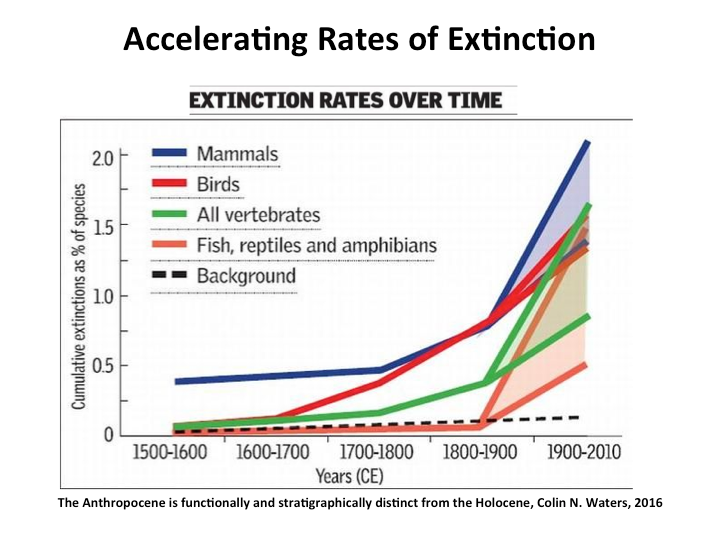
one measure of this extinction is climate change and carbon emissions.
we all know about climate change. chances are that you have experienced its effects first-hand.
whilst there is a strong correlation, it is not a complete measure of the unfolding crisis.
climate change is just one of the subsects of the problem that affect our survival.
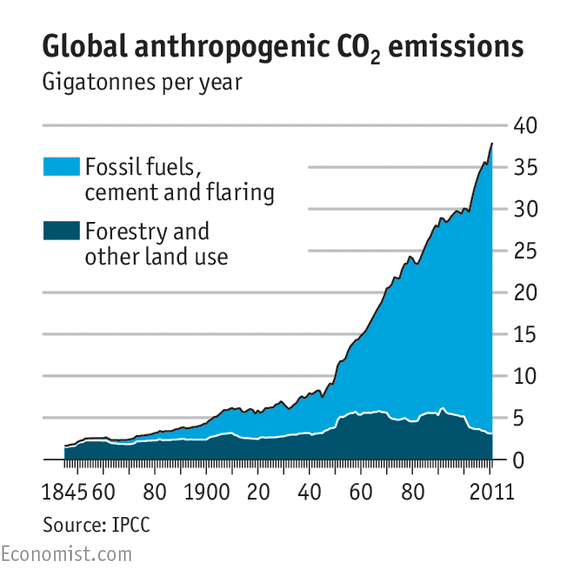
“When a measure becomes a target, it ceases to be a good measure.” — Charles Goodhart
in 2009, a group of 26 leading scientists from around the world defined the planetary boundaries framework.
contributing scientists were led by Johan Rockström from the Stockholm Resilience Centre and Will Steffen from the Australian National University. others involved include Paul Crutzen (a Nobel laureate), James Hansen (NASA Goddard Space Institute for Studies), Katherine Richardson (an oceanographer), and Hans Joachim Schellnhuber (former chair of the German Advisory Council on Climate Change).
the framework describes nine crucial planetary life support systems that allow for a safe operating space for humanity.
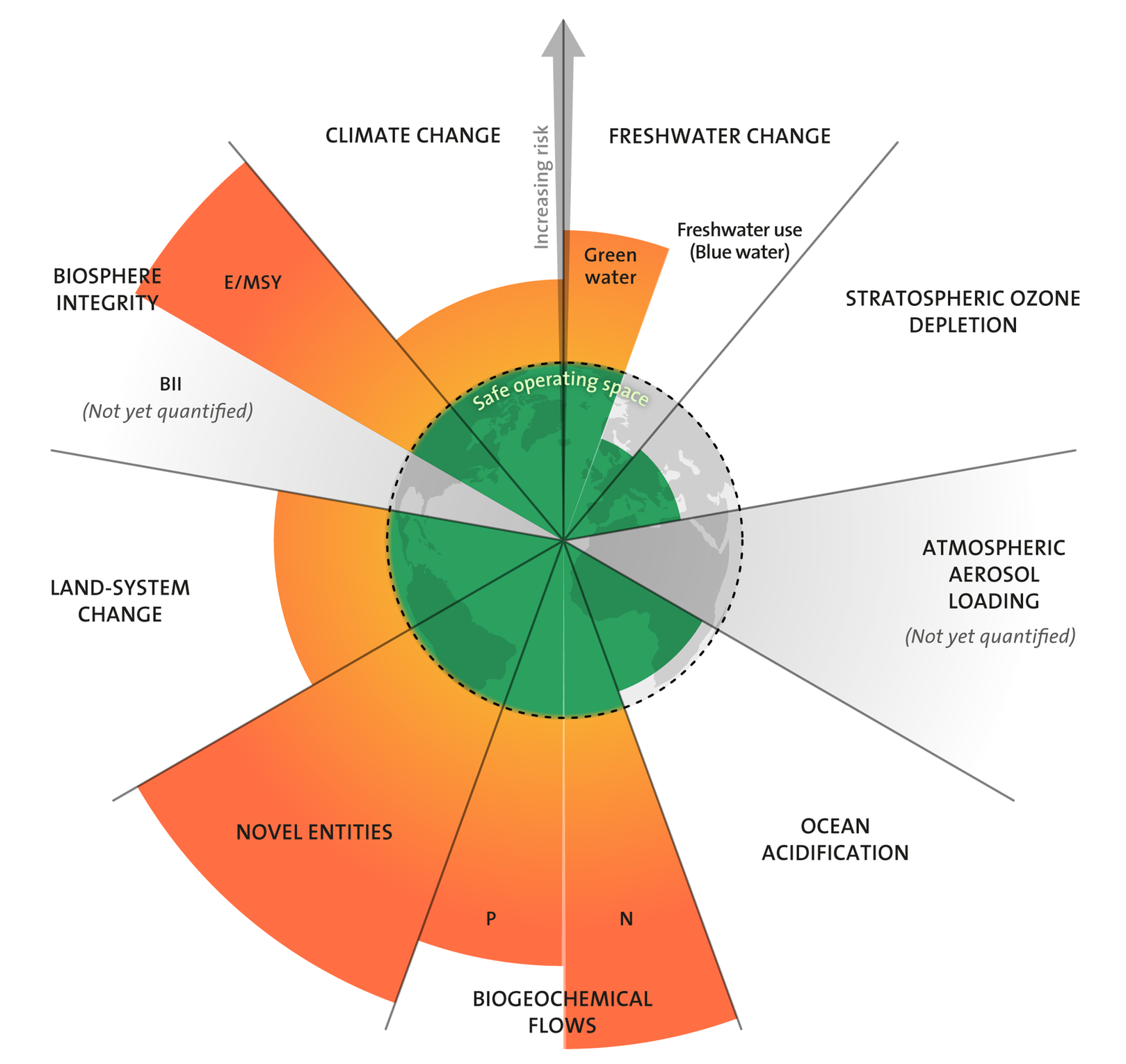
one of the boundaries with which we are at high risk is classified as “novel entities”.
a novel entity is a new composition of matter having a molecular structure that was not previously found in nature or synthesised, i.e. man-made chemicals. the most distinguishable example would be plastic.
plastics break down into microplastics and nanoparticles. these tiny pieces of plastic are so pervasive that they’ve been found at the summit of Mount Everest and in deep ocean trenches.
they can be found in the water we drink, the air we breathe, in our blood and can permeate our organs including the brain with neurological implications.
chemicals like BPAs used in plastics can also distort hormonal balance and affect human fertility.
nanoplastics have been proven to affect the behaviour of mice, hermit crabs and other animals.
another with a high risk level for “biosphere integrity” which relates to loss of biodiversity across the planet as a part of the anthropocene extinction.
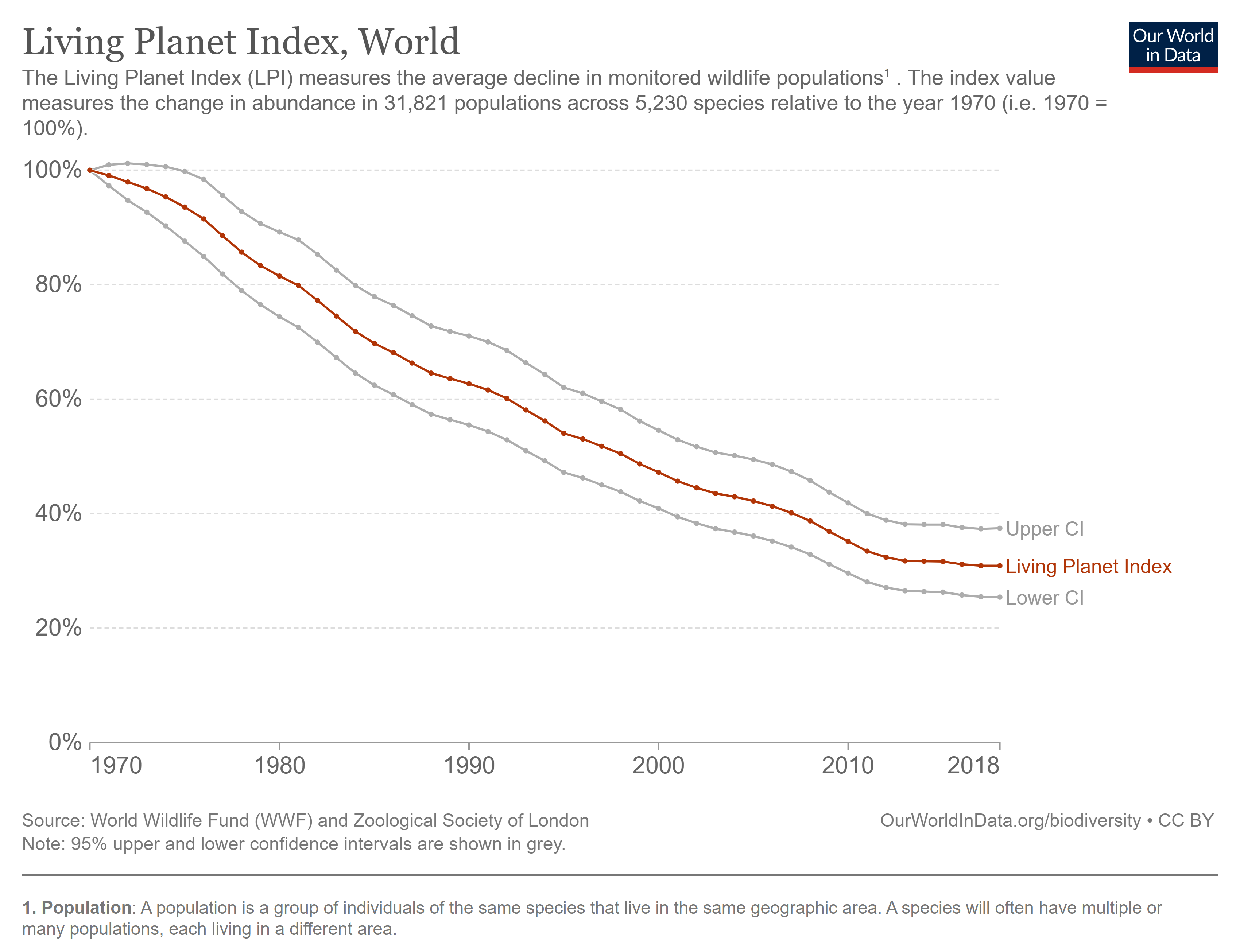
“biogeochemical flows” refers to the cycles of nitrogen (‘N’) and phosphorus (‘P’) through Earth’s ecosystems. through human activity, namely agriculture, these cycles have been through dramatic changes. the massive amount of reactive nitrogen converted through our activities pollutes waterways, coastal zones, and, eventually, the seas.
irreversible and permanent scarring of Earth will occur when the planetary boundaries are exceeded.
we have breached several of these limits and have caused everlasting damage to these life support systems. as we accelerate beyond these limits, we risk facing total collapse.
severe environmental damage may require a period of abstinence to fully regenerate Earth to its original capacity and functionality. over time, Earth can heal itself from damages caused by human activity and over consumption of resources.
simply: if we as a species want to continue to thrive, it is crucial that we stay within these boundaries. we need to get back into the safe operating space in the boundaries we have exceeded.
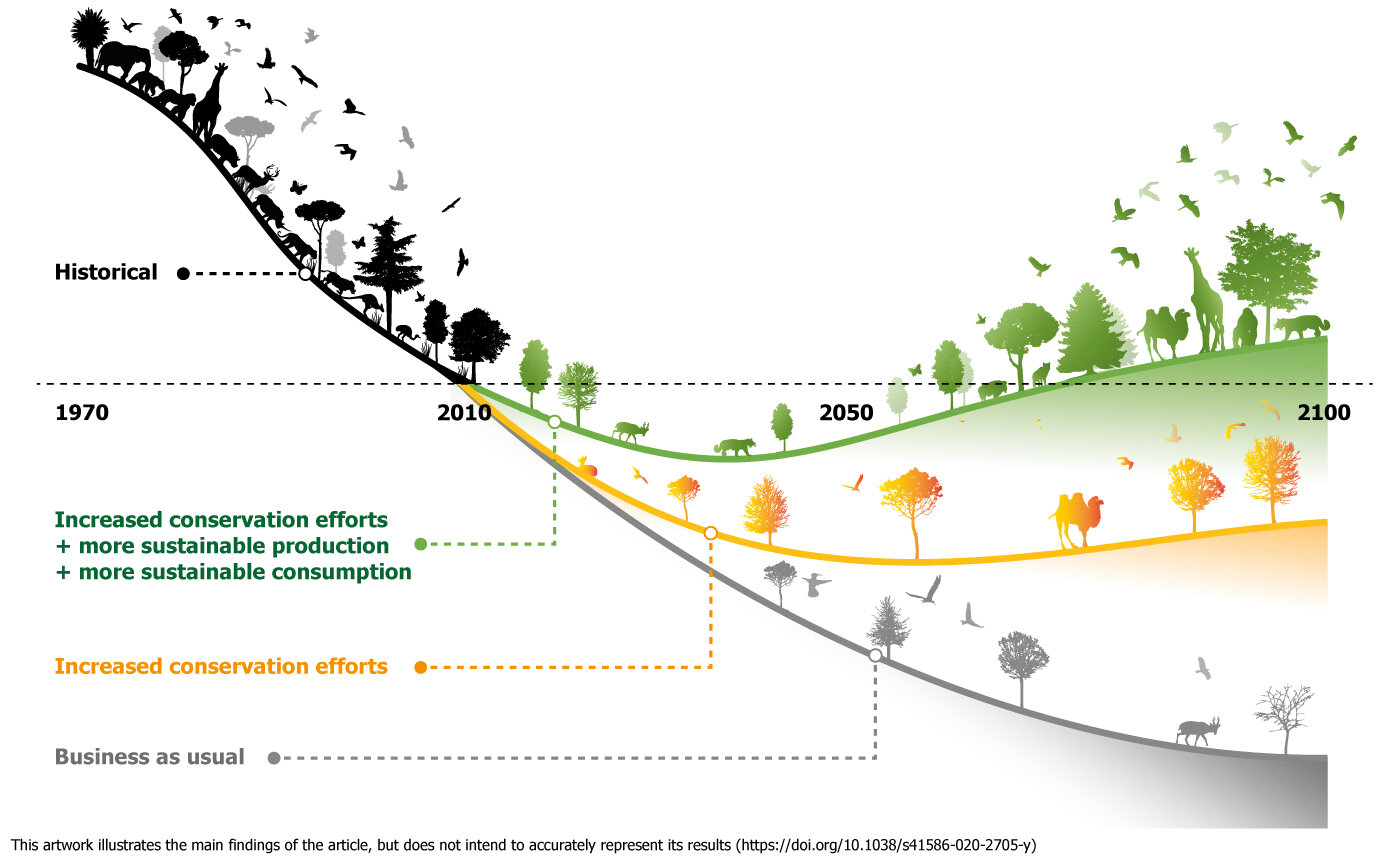
unfortunately, when it comes to the "scars" caused by exceeding one or more of these planetary boundaries, the damages are irreversible, requiring our help.
given the severity of the crisis, we need to do more than restore harmony: we must reverse several centuries of damage.
to eliminate the imbalance created by human action, we must restore nature.
only then can we hope to achieve true harmony with our environment and everything within it.
that’s why our immutable purpose is “heal the world” and we are in business to profitably deliver this need of humanity.
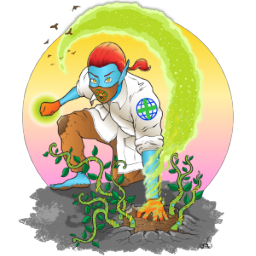
improvement in quality of life is what drives the desire for economic growth.
but economic growth is often correlated with environmental degradation.
since the industrial revolution, our economic activity has skyrocketed to the point that we are no longer harnessing natural resources in a renewable manner. rather, we are irreversibly exploiting nature.
eight billion people wake up every morning to work in an economic system that harms and exploits the planet, with no alternative.
existing economic models are a major incentives to the issues presented by the planetary boundaries framework.
forcing our current way of life to grind to a halt in order to allow nature time to recover is both unrealistic and unreasonable.
furthermore it would be unfair and unequitable to discourage billions of people living in relative poverty from pursuing a higher standard of living.
therefore the pragmatic and realistic answer is no.
doughnut economics, is a visual framework for sustainable development – shaped like a doughnut or lifebelt – combining the concept of planetary boundaries with the complementary concept of social boundaries.
the centre hole of the model depicts the proportion of people that lack access to life's essentials (healthcare, education, equity and so on) while the crust represents the ecological ceilings (planetary boundaries) that life depends on and must not be overshot.
the diagram was developed by University of Oxford economist Kate Raworth in her 2012 Oxfam paper A Safe and Just Space for Humanity and elaborated upon in her 2017 book Doughnut Economics: Seven Ways to Think Like a 21st-Century Economist and paper.
%5b1%5d.jpg)
we propose that there needs to be an equal but opposite economic force to counteract the damage done to nature by the classical economic system.
for each unit of damage caused to nature by economic activity, there needs to be an equal unit of restoration that is priced accordingly.
this ‘restorative’ economy can simultaneously restore nature while providing its actors with an income leading to a higher standard of living.
imagine a model where eight billion people are economically incentivised to restore nature. eight billion earth doctors to restore the planet.
by creating value for the restoration of nature, we can empower individuals and organisations to do the work needed to heal the world.
not only can we restore nature, we can create positive social impact by creating financial opportunity.
sustain credits are the "currency" of this framework, with everyone is financially incentivised to restore nature.
with this model, we can get the same 8 billion people working actively for nature rather than cause ever-increasing amounts of damage to it.
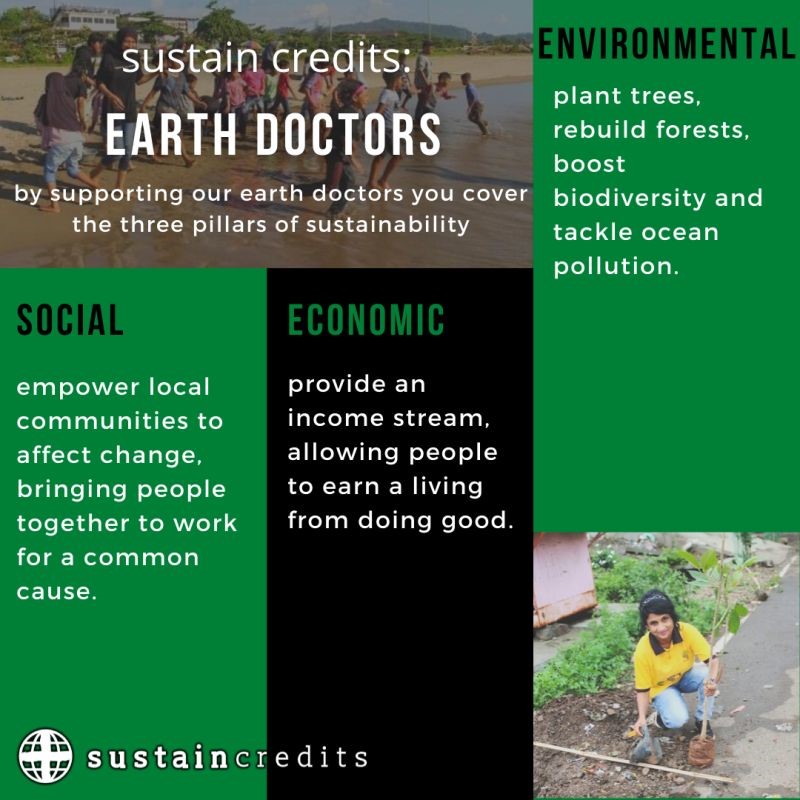
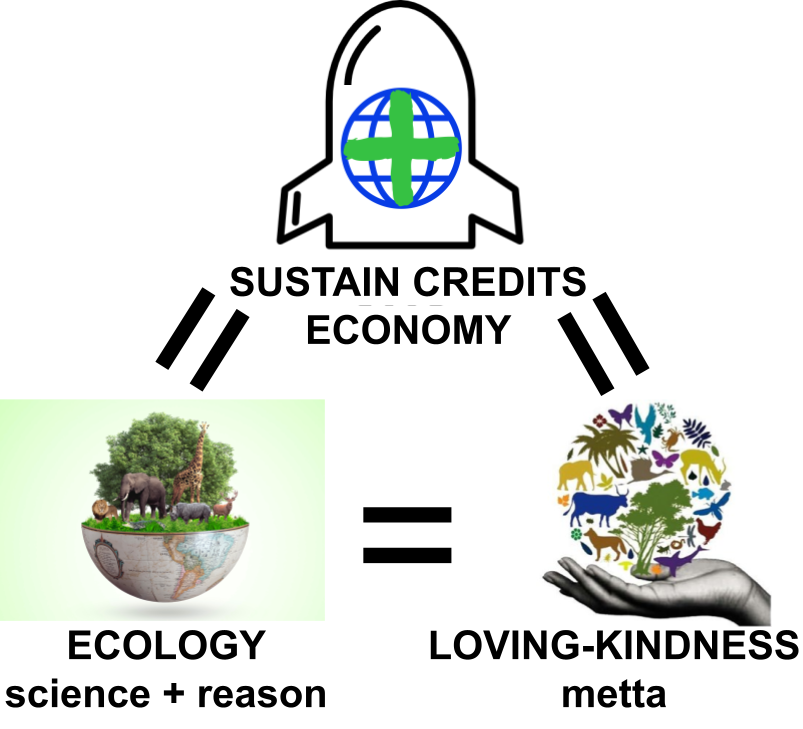
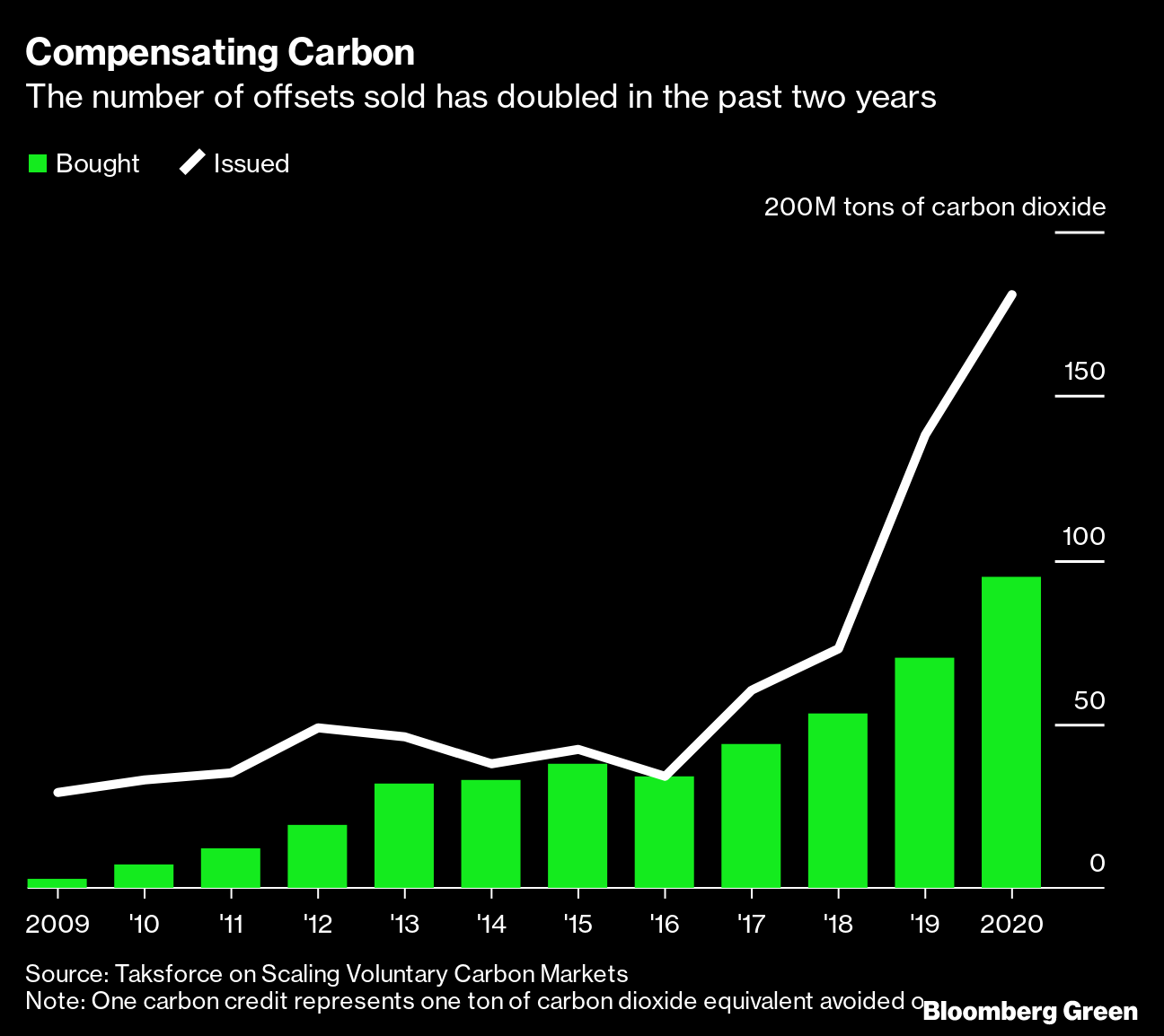
carbon offsets and tree planting are a trillion dollar industry as of 2021, and is on a high growth trajectory with the world's focus on climate.
carbon removal, such as tree planting, have a financial value - thanks to the maturity of these markets and the direct need by businesses, governments and consumers for tree planting.
unfortunately individual acts are overlooked with no readily available market.
sustain credits - is the direct democratisation of this industry directly to the people who restore nature.
additionally, there is a financial value for nature restoration beyond carbon.
the removal of novel entities e.g. plastics, tackling pollution, the improvement of biodiversity, conservation, land conversion through regenerative agriculture and afforestation, etc. - have a financial value albeit indirect.
we commercially spearhead the development of these markets by developing products formed by individual acts of nature restoration.
we innovate and introduce disruptive products “silicon valley” style to build this market, to profitably bring in income.
80% of these funds are meritocratically distributed to the people (or earth doctors) for their individual acts, without profiteering middleperson brokers.
an example is {earth sponsor}. another is {planezon}. yet another is {earth doc go}.
we intend to provide earth doctors with a supplementary income leading to a living wage.
that's the economic philosophy driving sustain credits: we wield the same economic forces as a means to restore nature and reward those who contribute to doing so.
other elements of nature restoration, such as the removal of novel entities like plastics, tackling pollution, improvement of biodiversity, wildlife conservation, barren land conversion via regenerative agriculture and afforestation, etc., all have a commercial value.
unfortunately there no direct link to this activity and it is upto us to commercially spearhead the development of these markets.
we innovate and introduce disruptive products “silicon valley” style to profitably develop trade and to bring in income through indirect products catering to the needs of the responsible consumer.
an example is {earth sponsor}. another is {planezon}. yet another is {earth doc go}.
80% of these funds are meritocratically distributed to the people (or earth doctors) for their individual acts, without profiteering middleperson brokers.
this means 80% go directly to the earth doctor delivering value, compared to charities or projects where the individual worker gets a fraction or single digit percentage for their efforts.
we intend to provide earth doctors with a supplementary income leading to a living wage.
as a for-profit business (incorporated in England and Wales, operating out of London), 20% is our fee for operations, growth (8 billion earth doctors) and profit for investors. this model is more inclusive, highly efficient and leads to rapid success to all stakeholders.
that's the economic philosophy driving sustain credits: we wield the same economic forces as a means to restore nature and reward those who contribute to doing so.
sustain credits are fully backed by a cash reserve held in sterling pounds (gbp/£) : this is known as the earth fund.
the earth fund is funded by income from sustain credits trade, with 80% of gross profits (gross profit = revenue minus direct costs) earmarked to the earth fund to be distributed to earth doctors.
the relationship between issued sustain credits tokens and the earth fund is similar to the relationship between currency and gold in the gold standard monetary system, prior to 1971.
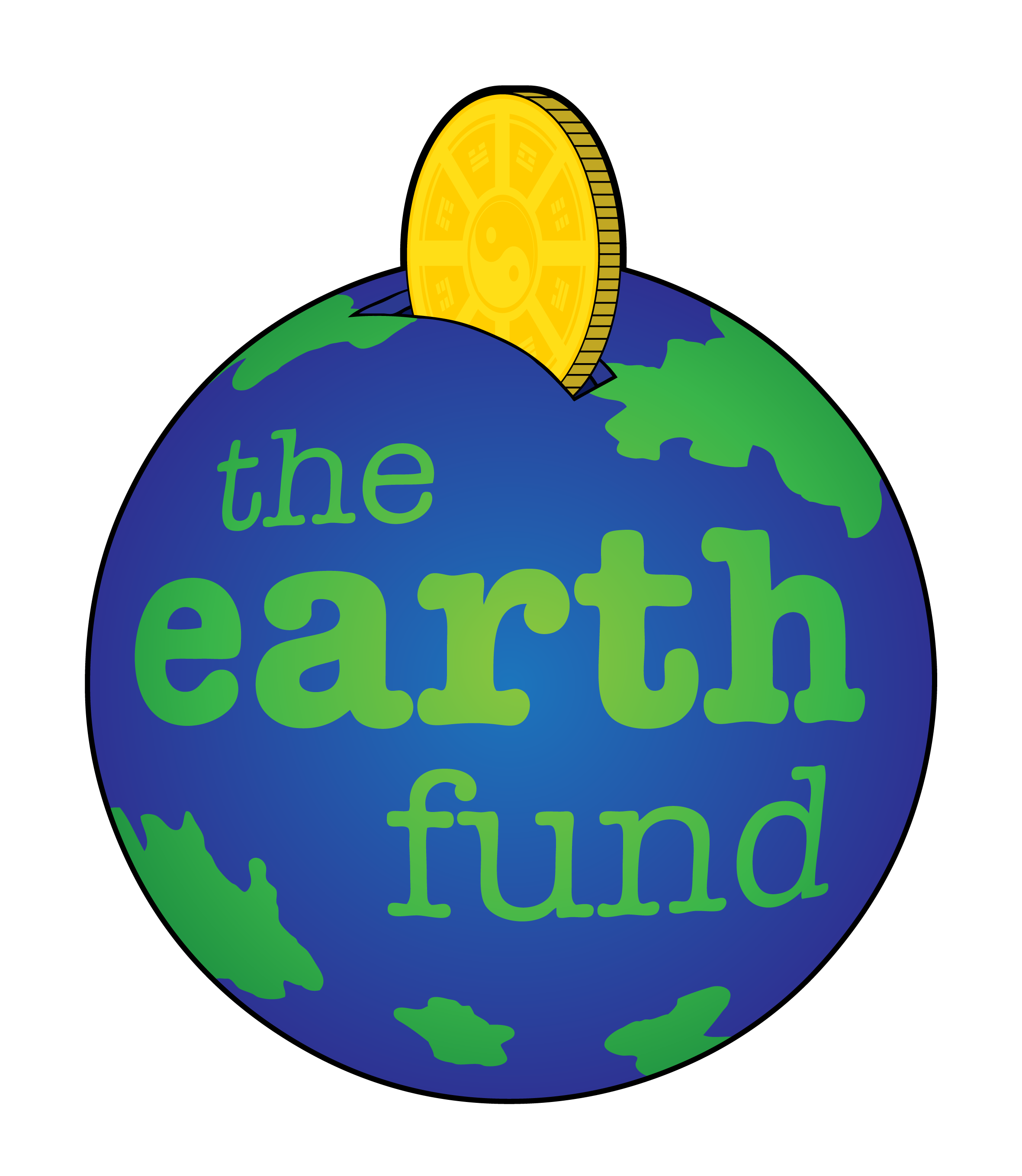
is a monetary system in which the standard economic unit of account is based on a fixed quantity of gold. the gold standard was the basis for the international monetary system from the 1870s to the early 1920s, and from the late 1920s to 1932 as well as from 1944 until 1971 when the United States unilaterally terminated convertibility of the US dollar to gold.
the earth fund's role is similar to the role played by Fort Knox (or the United Stated Bullion Depository) during the Bretton Woods Agreement.
.png)
the earth fund is solely funded by income from sustain credits trade, with no public or third party funds.
with this model, there is no public liability.
but we feel we have a fiduciary duty to be fully transparent with our income.
therefore all transactions and statements are fully transparent and available for public perusal.
with carbon credits, the focus is singularly on carbon and the climate, representing an incomplete solution.
we intend to fully develop the sustain credits market by offering sustainability offsets as a superior and holistic alternative to carbon credits.
we are open to any collaboration that delivers this future.
if you'd like to collaborate to deliver this systemic change, please get touch using the form below.
let's heal the world together.